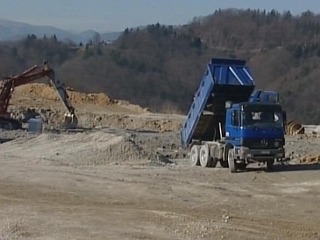
In the 1960s, geologists discovered large quantities of uranium in the ground near Žirovski Vrh, a hill in the area - enough to open a uranium mine.
At the time, some speculated that Yugoslavia wanted the uranium to build its own atomic bomb. In fact, the authorities in Belgrade had at one time considered obtaining nuclear weapons, but they eventually decided that the costs were too high. Instead, the country turned to nuclear energy, and the Slovenian town of Krško became the site of Yugoslavia's first – and only – nuclear power plant.
In 1974, when the plant was still under construction, the government gave the green light to the construction of the Žirovski Vrh Uranium Mine to supply Krško with domestic uranium. Extraction of the ore began in 1982, and by 1984, the mine was producing a highly concentrated form of uranium known as yellowcake. Sixty kilometers of shafts and tunnels were built below Žirovski Vrh.
At the height of its production, the mine employed around 500 people. Uranium mining is dangerous, and the miners faced various risks, but the use of a state-of-the-art ventilation system managed to reduce the levels of exposure to radon, a radioactive, carcinogenic gas.
During its operation, the mine produced 633,000 metric tons of uranium for Krško, and there enough uranium left in the ground to power the pant for at least another 20 years. In 1990, however, just eight years after the mine began to produce uranium, the authorities decided that Žirovski Vrh was inefficient. Because uranium could now be bought at a much lower price on the international market, the post-Communist government ordered that the mine be shut down.
It took more than a decade for the mine to be decontaminated and stabilized. Still, the residents of the nearby valley will continue to live with its legacy for years. High levels of radon in nearby schools have been blamed on the mine, and there is increasing concern that an unstable pile of uranium waste could be carried into the valley in case of heavy rain or an earthquake.
At the site of the disused mine, however, only a few dilapidated buildings and a memorial plaque remind passersby of a project that help to usher in the Nuclear Age in Slovenia.
Jaka Bartolj


































































